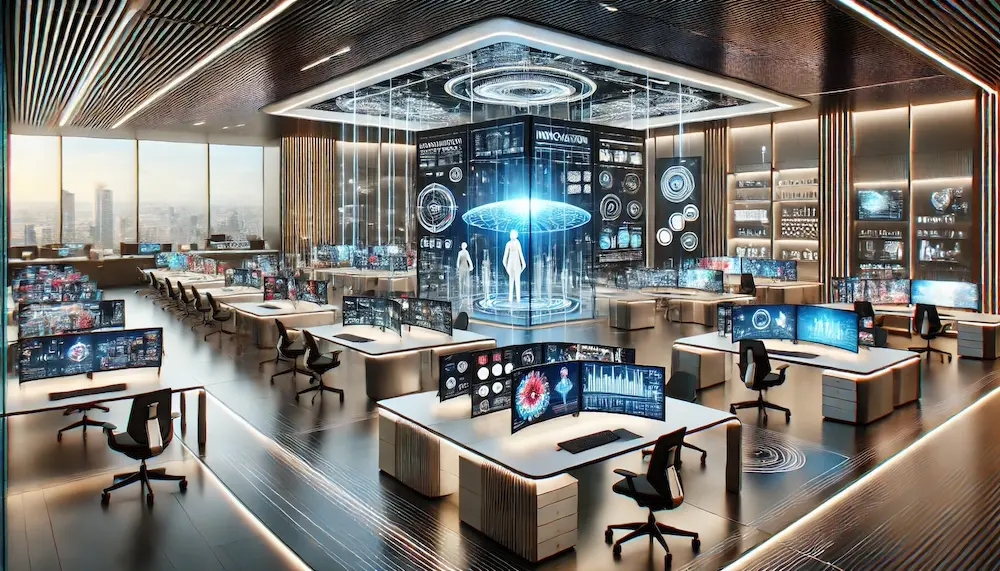A high-tech innovation office is a workspace meticulously designed to integrate advanced technologies, fostering an environment that promotes creativity, collaboration, and efficiency.
History and Origins of High-Tech Innovation Offices
The evolution of high-tech innovation offices is closely tied to the rapid advancements in technology and the shifting paradigms of work culture. In the late 20th and early 21st centuries, as technology companies emerged and expanded, there was a growing need for workspaces that could accommodate and stimulate innovation. This led to the development of office designs that seamlessly integrated cutting-edge technologies, flexible workspaces, and collaborative environments. Companies like Google and Apple pioneered this movement, creating campuses that not only housed their operations but also served as incubators for creativity and technological advancement.
Key Features of High-Tech Innovation Offices
- Advanced Technological Integration: Incorporation of state-of-the-art technologies such as interactive digital displays, virtual reality (VR) and augmented reality (AR) tools, and smart office systems to enhance productivity and collaboration.
- Flexible and Modular Workspaces: Designs that allow for easy reconfiguration to accommodate various team sizes and project needs, promoting adaptability and dynamic collaboration.
- Sustainable and Smart Building Systems: Implementation of energy-efficient systems, smart lighting, and climate control to create an environmentally friendly and comfortable workspace.
- Emphasis on Collaboration and Innovation: Spaces designed to encourage spontaneous interactions, brainstorming sessions, and teamwork, often featuring open layouts, communal areas, and dedicated innovation labs.
Applications of High-Tech Innovation Office Design
- Technology Companies: Firms like LinkedIn have embraced high-tech office designs to support diverse work models and enhance real-time collaboration.
- Creative Agencies: Agencies incorporate high-tech elements to inspire creativity and streamline workflows, utilizing tools like interactive displays and flexible workspaces.
- Research and Development Centers: R&D facilities adopt high-tech designs to facilitate innovation, experimentation, and efficient project development.
Considerations When Designing a High-Tech Innovation Office
- User Experience: Ensuring that the integrated technologies are user-friendly and enhance the work experience without causing unnecessary complexity.
- Scalability: Designing spaces and systems that can evolve with technological advancements and organizational growth.
- Security: Implementing robust cybersecurity measures to protect sensitive information within a highly connected environment.
- Employee Well-being: Balancing technological integration with elements that promote health and well-being, such as natural lighting, ergonomic furniture, and access to green spaces.
Conclusion
High-tech innovation offices represent the convergence of technology, design, and functionality, creating environments that not only accommodate but also stimulate innovation and collaboration. By thoughtfully integrating advanced technologies and flexible design elements, organizations can cultivate workspaces that drive productivity and inspire creativity.
